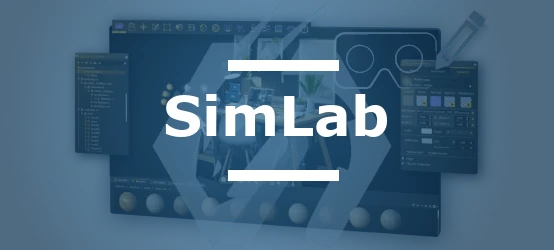Table of Contents
- History and Development of Parasolid
- Technical Characteristics of the Geometric Kernel
- File Formats and Specificities
- Comparison between Parasolid and ACIS
- CAD Interop Solutions for Parasolid Format
- Best Practices for Parasolid Data Exchange
- Conclusion
In an industrial environment where the multiplicity of CAD systems poses significant data exchange challenges, the Parasolid format has become an essential reference for technical data interoperability. Parasolid is a 3D geometric modeling kernel widely used in the computer-aided design (CAD) industry, particularly in PLM (Product Lifecycle Management) environments. Its reputation is based on its precision, reliability, and flexibility, making it an ideal tool for 3D model interoperability between different systems.
The challenges of 3D data exchange include preserving geometric accuracy, compatibility between various platforms, and retaining critical model information. Parasolid addresses these challenges by offering a standardized yet powerful format that facilitates 3D data conversion between heterogeneous systems.
History and Development of Parasolid
Origins and Evolution of the Format
Parasolid was developed by Siemens Digital Industries Software, a recognized leader in CAD/CAM/CAE technologies. The initial objective was to create a robust 3D modeling kernel that could be integrated into various CAD software. This vision materialized through the massive adoption of Parasolid as a fundamental component of many computer-aided design solutions.
Over the years, Parasolid has established itself as an industry standard and has been integrated into popular software such as:
- NX (formerly Unigraphics)
- SolidEdge
- SOLIDWORKS
- Onshape
- Bentley Systems
- IronCAD
- Shapr3D
Current Market Position
Today, Parasolid is integrated by more than 200 software publishers, enabling complete compatibility of 3D models between more than 350 applications based on the Parasolid XT data format. This widespread adoption makes it one of the most important formats for the representation, storage, and sharing of 3D digital products in industrial sectors.
Technical Characteristics of the Geometric Kernel
Parasolid stands out for its functional richness and technical robustness, making it a preferred choice for demanding 3D modeling applications.
Architecture and Advanced Features
The Parasolid kernel offers more than 900 functions that support various modeling techniques. These capabilities include:
- Advanced solid modeling
- Direct geometry editing
- Free-form surface modeling
- Convergent modeling technology
- Extended graphic and rendering support
- Flexible tessellation options
- Comprehensive suite of model data queries
Convergent modeling constitutes a particularly important advancement, as it extends Parasolid's robust B-rep (Boundary representation) modeling functions to models based on faceted representations.
Robustness and Precision in Modeling
Parasolid is distinguished by its exceptional precision in representing complex 3D models. This precision is crucial for industries such as aerospace and automotive where error tolerance is minimal. The kernel ensures data integrity by maintaining geometric and topological relationships between different parts of the model through boundary representation (B-rep).
File Formats and Specificities
Extensions and File Structure
Parasolid uses two main file extensions:
- .x_t - Parasolid Text Transmittal: text format, more easily readable
- .x_b - Parasolid Binary: binary format, more compact and loaded faster
Both formats contain the same data but differ in their storage method. The Parasolid format is an open and published format, meaning it is not proprietary and can be used by any compatible software.
Supported Data Types
Most Parasolid files exclusively contain:
- 3D solids
- Surface data
2D data such as lines and arcs are generally not supported in the Parasolid format. This specialization in 3D modeling allows the format to focus on excellence in this specific domain.
Comparison between Parasolid and ACIS
Here is a detailed comparison of Parasolid and ACIS formats, two essential neutral formats in the CAD interoperability ecosystem:
| Aspect | Parasolid | ACIS |
|---|---|---|
| General Information | ||
| File extensions | .x_t (text), .x_b (binary) | .sat (text), .sab (binary) |
| Developer | Siemens Digital Industries Software | Spatial Technology |
| Geometry | ||
| Modeling type | B-rep (Boundary representation) | B-rep (Boundary representation) |
| Geometry types | Solids, surfaces, hybrid combinations, non-manifold topologies | Parametric curves and surfaces, intersections, swept and blended surfaces |
| Precision | Very high precision | Very high precision |
| Procedural geometry | Extended support, especially for intersection curves and rolling ball surfaces | Support for various modeling operations through specific entities |
| Assembly | ||
| Hierarchical structure | Limited support | Not supported |
| Component management | Distinction between parts and bodies (with certain limitations) | All components appear as sibling parts after export |
| Visualization | Numerous rendering options | More limited features |
| PMI (Product Manufacturing Information) | Not supported | Not supported |
| Software compatibility | Mainly Siemens solutions, SolidWorks, and Microstation | Mainly Autodesk solutions |
| Technical Particularities | ||
| Mesh/tessellation support | Advanced support for hybrid models combining B-Rep and mesh | Does not support tessellation representation |
| 2D Data | Not supported | Not supported |
| Intellectual property protection | Loss of parametric relationships serving as protection for intellectual property | Loss of parametric relationships serving as protection for intellectual property |
Parasolid is distinguished by its high precision and very wide adoption in the industry, making it an excellent choice for interoperability between different CAD systems. It offers better support for assembly hierarchies and hybrid models.
ACIS, although also powerful, has significant limitations regarding assembly management. Its main strength lies in its close integration with applications based on the ACIS kernel, allowing fast and faithful loading of models without requiring translation.
Note: Other geometric engines such as GRANITE, C3D Modeler, CGM, ShapeManager, KCM, Open CASCADE, or Russian Geometric Kernel were not included in this comparative table because they are either considered obsolete or do not play in the same category as Parasolid and ACIS in terms of industrial adoption and multi-platform support. These engines, while relevant in specific contexts, do not represent the de facto standards for CAD interoperability that Parasolid and ACIS have become.
CAD Interop Solutions for Parasolid Format
CAD Interop offers several specialized solutions for working with Parasolid files, each addressing specific technical data interoperability needs.
3DViewStation: Advanced Visualization and Analysis
3DViewStation is a powerful solution for visualizing and analyzing Parasolid models with specific features:
- High-performance visualization of .x_t and .x_b files
- Detailed geometric analysis of models (measurements, sections, comparison)
- Bidirectional conversion to and from Parasolid format
- Extraction of technical information and metadata
- Creation of technical documentation from Parasolid models
This solution allows engineering teams to work efficiently with Parasolid models without requiring access to the original CAD software.
CADfix: Data Repair and Simplification
CADfix is particularly important in the Parasolid ecosystem for:
- Repairing geometric problems in Parasolid files (self-intersections, defective surfaces)
- Simplifying complex models while preserving geometric integrity
- Harmonizing tolerances and model parameters
- Preparing Parasolid data for finite element analysis
- Optimizing models for exchanges between different CAD systems
These features are crucial for ensuring the quality of Parasolid data, particularly during transfers between heterogeneous systems.
SimLab: Immersive Experiences from Parasolid Models
SimLab transforms Parasolid models into interactive experiences with the following capabilities:
- Creation of virtual environments based on Parasolid models
- Development of immersive simulations for technical training
- Generation of interactive visualizations for design review
- Integration of Parasolid models into AR/VR applications
- Real-time collaboration on complex models
This solution extends the utility of Parasolid models beyond technical design to collaborative and immersive applications.
CADIQ: Model Validation and Change Management
CADIQ plays an essential role in validating Parasolid models:
- Rigorous validation of model integrity in exchange processes
- Precise documentation of technical modifications (ECO - Engineering Change Orders)
- Advanced comparison of Parasolid model versions
- Detection of geometric quality issues before they affect production
- Generation of detailed reports on differences between models
These features are particularly important in regulated industries where modification traceability and data validation are essential.
Best Practices for Parasolid Data Exchange
How to Optimize Exchanges via Parasolid?
To maximize the efficiency and reliability of data exchanges via Parasolid, several practices are recommended:
- Standardize tolerance parameters between source and target systems
- Clean models before export (removal of unnecessary entities)
- Validate geometric integrity before and after conversion
- Document model specificities that could be affected during conversion
- Use specialized repair tools like CADfix to solve complex problems
Why is Geometric Healing Essential with Parasolid?
Geometric healing (model repair) is particularly important when using Parasolid as an exchange format for several reasons:
- Tolerance differences between CAD systems can create inconsistencies
- Complex curves and surfaces can be interpreted differently depending on the geometric kernels
- Boolean operations can generate artifacts requiring correction
- The precision of B-rep models requires careful validation after conversion
Using specialized tools like CADfix allows identifying and correcting these issues to ensure the integrity of Parasolid models.
Conclusion
The Parasolid format has established itself as a pillar of technical data interoperability thanks to its robustness, precision, and wide adoption in the industry. With more than 350 compatible applications and a powerful geometric kernel offering more than 900 features, Parasolid facilitates the exchange of complex 3D models between different CAD systems.
The advantages of Parasolid for interoperability include its precise B-rep representation, its ability to preserve data integrity, and its bidirectional compatibility between different versions. To fully exploit these advantages, CAD Interop offers specialized solutions such as 3DViewStation, CADfix, SimLab, and CADIQ, each addressing specific needs in managing Parasolid models.
In an industrial environment where multi-CAD collaboration is becoming the norm, mastering interoperability via Parasolid constitutes a significant competitive advantage. Organizations that adopt the right practices and appropriate tools for Parasolid data exchange can considerably improve their engineering efficiency and reduce costly errors related to data conversion problems.





